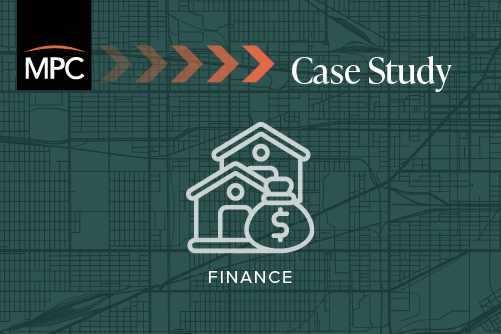Residential Rehabilitation Grants
Elgin, Kane County
Finance
These grants are intended to encourage residents to restore and maintain the original features of their homes, ultimately preserving the character of the older established neighborhoods, while assisting families who otherwise could not afford these improvements.

Background
Many municipalities looking to create or preserve a diverse range of housing opportunities have discovered it is much harder to build new housing than it is to preserve what they already have. Understanding this, the City of Elgin has two home rehabilitation grant programs, “50/50” and “75/25,” to assist both owners and renters to rehab their properties within the city’s historic districts or to rehab individual historic landmarks. Elgin’s 75/25 program specifically targets low-and-moderate income households that have homes with the same historic criteria. These grants are intended to encourage residents to restore and maintain the original features of their homes, ultimately preserving the character of these historic neighborhoods, while assisting families who otherwise could not afford these improvements.
How it works
The City of Elgin finances the 50/50 and 75/25 grants with revenues from the riverboat casino. It allocates up to $200,000 annually for both programs, awarding up to a maximum of $20,000 per property. The grant programs are available for properties in Elgin’s four historic districts and individual landmarks. There is no ownership requirement to be eligible for the 50/50 grant; both homeowners and renters may apply for these funds. The 75/25 grant, by contrast, is available to low-and-moderate income homeowners and applicants must occupy their dwellings to be eligible.
Applicants are awarded points based on the number of criteria the project meets. The Elgin Heritage Commission, a group of citizens appointed by the City Council to promote and review projects related to historic preservation, reviews each proposal. The grants are primarily used for restoration-type projects that are above and beyond required maintenance.
Ideal proposals include plans to remove aluminum siding, restore historic features and rebuild new porches in keeping with the original design of the structure. Proposals for the 75/25 grant focus on similar work, but also allow for some maintenance-based work to be included along with the restoration projects. Generally, residents who apply for funds under the 75/25 grant program learn of the program while dealing with city code violation maintenance issues. Proposals from low-income families receive more weight in the evaluation process than do proposals from moderate-income families. Proposals for both types of grants are accepted each year beginning January 1.
Applicants for both grant types must provide a minimum of two contractor estimates for the work. Applicants can apply for up to two grants in any five-year period. The exterior of the home is inspected before grant approvals, and any exterior code violations noted at that time must be corrected within the scope of the proposed project. A final inspection is performed on the building exterior at the time of completion, before the final disbursement of funds. These inspections are intended to document all exterior code violations prior to the rehabilitation project and ensure all violations are corrected during the rehabilitation process. Should the inspectors find any outstanding violations, the homeowner receives up to 75 percent of the total grant money until all violations have been corrected.
Elgin commits to a two-week approval process for all grant proposals. The applicant has 18 months to complete the work that has been approved, although extensions are available by application. Grants are supplied only after the work is completed.
The grant programs have been very successful. The 50/50 grant was implemented in 1995 as part of the Elgin’s five-year plan and was updated in 2008. The 75/25 grant was implemented as part of the City’s 1998 five-year plan and is revised and renewed in a similar fashion as the 50/50 grant: annual review with possible renewal every sixth year. The 75/25 program was updated in 2008. Since the inception of the grant programs, the City has distributed a total of 310 grants at a total cost of $5.3 million.
Much of Elgin’s historic district revitalization can be attributed to these grants, restoring homes one at a time. Studies conducted within the city comparing the property values of homes located within the historic districts to those located just outside those districts indicate the property values of restored homes within the historic districts have increased at a higher rate than for homes outside the district. Prior to the program’s implementation, homes in the historic district were distressed and devalued. While values of participating restored homes have increased by as much as 100 percent in some instances, they still remain attainable to many working families. Another indication of the success of the programs is the initiative of the community to designate additional historic districts and landmarks; and more recently, an ongoing effort where properties designated as a landmark bungalow will be eligible for restoration funds from the grant program.
Contact
Department of Community Development, City of Elgin
847-931-6004, elgindca@cityofelgin.org, www.cityofelgin.org
-
Goal
Preserve and rehabilitate properties in Elgin’s Historic Districts and individual landmarks.
-
Target
The 50/50 program targets all residents of the four historic districts and individual landmarks.
The 75/25 program targets low-to-moderate income households within the four historic districts and individual landmarks.
-
Financing
Up to $200,000 per year per program from riverboat gaming revenues.
-
Success
310 grants since inception of these programs at a total cost of $5.3 million.
-
Lessons learned
Work with property owners of older homes to instill a sense of pride in their home which, results in a revitalization of the neighborhood and stabilized property values.